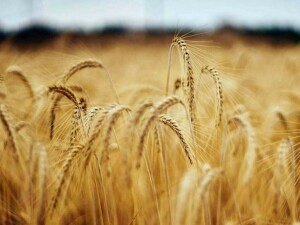Rafhan Maize Products Company Limited
Rafhan Maize Products Company Limited (PSX: RMPL) was established in Faisalabad, Pakistan. The company has three plants at Faisalabad, Jaranwala and Jamshoro, where it uses maize as a raw material to manufacture and sell various industrial products, such as industrial starches, liquid glucose, dextrose, dextrin, and gluten meals.
Some of the industries where its products find its utility are textile, food, confectionary, pharmaceutical, paper and corrugation, etc.
Shareholding pattern
Rafhan Maize is primarily held by its associated companies, undertakings, and related parties, with over 71 percent shares held under this category. This category solely includes Ingredion Incorporated. Some 20 percent shares are held by the local general public, followed by close to 7 percent owned by the company’s directors, CEO, their spouses, and minor children. Within this category, the largest number of shares are owned by Mr. Zulfikar Mannoo, a non-executive director as well as the member of the Audit Committee and Human Resource and Remuneration Committee. The remaining about 2 percent is owned by the rest of the shareholder categories.

Historical operational performance
Topline for Rafhan Maize has mostly increased since CY13, except for in CY15, whereas profit margins have seen a gradual incline over the years.

In CY15, the company saw a little over 2 percent contraction in its revenue; most of this contraction came from domestic sales, while export sales increased during the year. The notable reduction in cost of production as a percentage of revenue helped to significantly improve profit margin that was further supported by other income. The latter was generated through mark up on staff loans and profit on bank deposits. Thus, despite topline contraction, net margin increased to 13 percent.
During CY16, the company saw a near 3 percent growth in its topline. Most of this was volume driven, with demand coming from confectionary segment, industrial specialties, and exports. Cost of production, on the other hand, as a percentage of revenue was lower at 72.5 percent (CY15: 77.9 percent). This was attributed to lower crude oil prices that kept fuel expenses in check. The effect of this also trickled down to the bottomline as the net margin improved to 15.3 percent.

Topline growth remained stable, close to 3 percent during CY17. This incline came from both, domestic as well as export sales. Cost of production fell further to 71 percent of revenue- the lowest seen in six years, despite raw material expense making a larger part year on year, of the total cost of production. This led gross margin to peak at 28.5 percent. Although distribution expense had been increasing as a share in revenue, it did not affect profitability to a large extent. Therefore, net margin continued to increase to nearly 17 percent for the year.
In CY18, topline grew at double digits for the first time since CY13, at 13.6 percent. Both export sales and domestic sales exhibited a rise, whereas demand came from segments such as writing/printing, industrial paper, and food ingredients business. Cost of production increased slightly to 73 percent, decreasing gross margin to nearly 27 percent. However, the fall in distribution expenses as a share of revenue, that had been increasing for two consecutive years, reduced that helped maintain operating and net margin at 23 percent and 16 percent, respectively.

Topline, during CY19, further grew by over 19 percent. Both domestic and export sales grew significantly. A lot of it was derived from the animal nutrition and health business that contributes a significant portion to the total revenue. Cost of production made a slightly higher portion of revenue at 73.8 percent that brought gross margin down to 26 percent. However, net margin was consistent at 16 percent owing to the contribution made by other income. This was made primarily from “mark up on staff loans and profit on bank deposits”.
Recent results and future outlook
Although topline was the highest during 9MCY20 crossing Rs 9 billion, it also saw the highest cost of production due to rise in raw material costs, utilities, etc. The effect of Covid-19 was seen in the second quarter as topline fell, both quarter on quarter as well as year on year. However, this was also accompanied by a lower cost of production that helped improve profit margins. By the third quarter, topline regained its level at close to Rs 9 billion. This was on the back of industrial ingredients business, food, in addition to textile, paper and corrugation. With the lowest cost of production as a percentage of revenue, around 69 percent, the company saw the highest net margin of 20 percent. Profitability was also better on a year-on-year basis during 9MCY20.

Some of the challenges the company sees in the future are political instability, gas shortages, and exchange rate risk.

























Comments
Comments are closed.